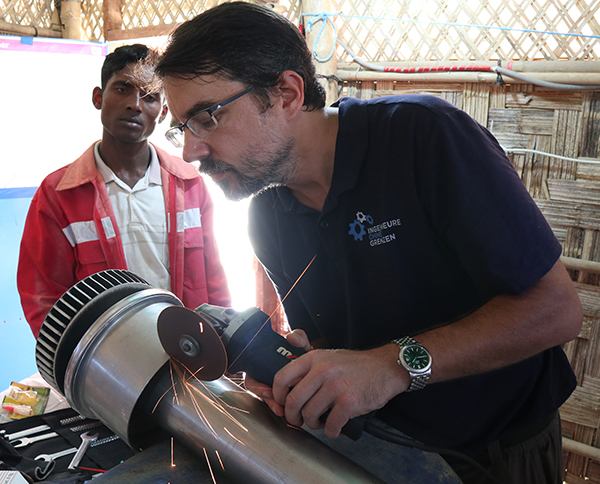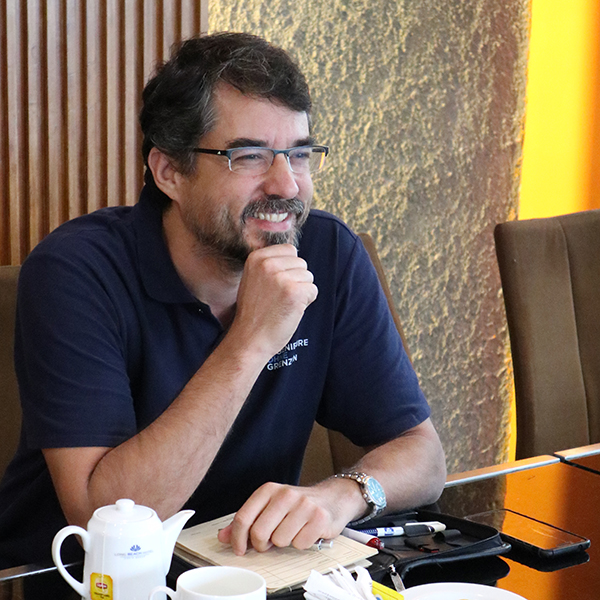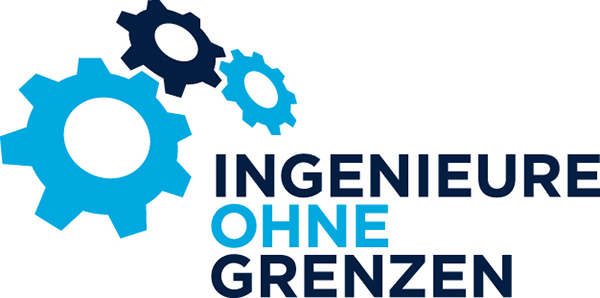
|
Engineers helping people help themselvesAn interview with M. Kurt Saygin PROSTEP is a supporting member of Engineers Without Borders Germany (Ingenieure ohne Grenzen e.V. (IOG)). In an interview for the PROSTEP newsletter, M. Kurt Saygin, chairman of the organization's board, discussed the objectives and activities of the non-profit aid organization, which in recent years has implemented infrastructure projects in 30 countries together with local partners. The staff, which is mainly made up of volunteers, provides engineering-specific support that helps people help themselves. Question: IOG was founded in 2003 – with what aim in mind? Saygin: Like many aid organizations, it was founded with the aim of helping people in need. Back then, however, most other organizations focused on providing medical assistance. But even doctors need a basic infrastructure, like a functioning power and water supply for example, if they are to provide their patients with the best possible care. People who drink clean water don't get sick in the first place. It wasn't advances in medicine that enabled us to vanquish the plague and cholera in Germany, it was the fact that the infrastructure had improved and that was thanks to engineers. Our mission is to bundle this engineering know-how and use it to improve the quality of life of people in poorer countries over the long term. 
Saygin: No, not at all. But when we head off to a project, we naturally need engineers on the ground so that we can make as big a difference as possible with as little manpower as possible. Question: What is the difference between IOG and an organization like the German Federal Agency for Technical Relief (THW)? Saygin: The THW doesn't help people help themselves, it helps in specific emergencies, like after the tsunami in 2004, by providing an enormous amount of technical equipment and highly trained specialists. Our approach, on the other hand, involves development aid that focuses on the long term. Another difference between the IOG and other organizations is that we attach great importance to volunteer work. About 1,000 of our 3,750 supporting members are actively involved in the work performed by the association or in projects abroad. And they aren't paid for it – our engineers do this in their spare time and sometimes even pay travel expenses out of their own pockets. Question: Why do personnel and administrative costs still account for 30 percent of your expenses? Saygin: Unlike many other NGOs, everyone at IOG who travels abroad is working as a volunteer. Project expenses are therefore low in relation to general costs. The ratio would be different if we were able to include the voluntary engineering man-days, but the law doesn't allow this. Question: 2017 saw a decrease in donations and grants. How were revenues in 2018? Saygin: We've enjoyed steady growth for the last 15 years, with a dip in 2017 but a new record high of just under 1.2 million euros in 2018, an amount we will probably top again in 2019. Question: Aside from water supply, what other key areas do IOG's projects focus on? What is the organization doing to combat climate change, for example? Saygin: First of all, our projects don't focus on water supply alone, we also have a large number of projects that deal with water disposal, which is a completely different area. We also have a bridge construction competence group, which has built a number of bridges in recent years. We are currently carrying out a project involving earthquake-resistant reconstruction activities in Nepal. In Africa, we've built small hydroelectric power stations that bring electricity to villages that are completely cut off from the power grid. Our energy supply projects focus exclusively on renewable energies. We don't install diesel generators anywhere nor do we help build power plants that burn fossil fuels. Instead we rely on photovoltaics, biogas or solar thermal energy. And we usually use clay bricks instead of fired bricks for construction projects to avoid burning wood. Projects that avoid the emission of CO2 on a large scale are still a bit too ambitious for us, but we are very sensitive to the issue – just on a smaller scale. Question: How many projects does IOG carry out each year? Saygin: Last year there were 46 projects running in parallel at home and abroad and this year's number will be similar. Question: What approach do you take to your projects? You not only plan the projects but also implement them, right? Saygin: We work with local partners as a matter of principle, which is perhaps also something that sets us apart from other organizations. These are usually small non-governmental organizations that become aware of us through a variety of different channels or as the result of personal contacts. Sometimes students from the respective countries are involved in our regional groups. We now have 33 regional groups in Germany. They propose the projects, collect the money once information has been gathered on the ground and the projects have been approved by the respective working groups, and then implement them. But, as I've said, this is always done in collaboration with local partners and using local materials and manpower. Question: Do you also collaborate on projects with other aid organizations? Saygin: Yes, I can even give you a current example. We have just received a request from a large medical aid organization that is working in a war zone and is having difficulties with their logistics. They need a landing strip to get the relief supplies into the country. This is a typical engineering task that we perform, thus making it possible for other aid organizations to take action. We also often have contact with other aid organizations on the ground. Question: You are mainly involved in Africa. What criteria do you use when selecting projects? Saygin: Our projects focus on West and East Africa, but we're also active in South America and Southeast Asia. The key question is always where we can contribute our expertise to provide added value. For example, we are currently rebuilding an abandoned hospital in Uganda, providing everything from the water supply and wastewater disposal to the power supply with the aim of creating a sound building that can provide the requisite level of hygiene. And it is also ensured that doctors will work there again. We have fantastic school projects that don't merely involve erecting a new building on a site somewhere, but which improve the conditions for children at existing schools instead. Our goal is to ensure that these types of projects will still be around 25 years from now. Question: How do you measure the success and sustainability of projects? Saygin: That question hits a nerve. Much to our regret, there is no neutral supervisory body for development aid projects. It is up to each organization to monitor sustainability. In our case, the fact that projects often lead to long-term friendships is an important factor in our success. For example, I'm still in touch with the local organization in Tanzania that helped us build a water tank over twelve years ago. The tank is still there and still works, as you can see in our video on YouTube. But I don't know whether we, as a larger organization, will be able to work that way forever. 
Question: What challenges does your staff face when it comes to projects like this? Saygin: (laughs) That depends on how much hardship they're used to. Younger people who are doing something like this for the first time, in particular, sometimes find it difficult to imagine the situation on the ground: sleeping under mosquito nets, not being able to charge your mobile phone, or having to boil the water for your morning coffee on a wood-burning stove. This can be quite a culture shock, although it's actually the fun part of the projects. Implementing engineering projects is also difficult in many countries because the quality of the materials and the work performed are not up to standard due to a lack of training opportunities on the ground, which means that adjustments often have to be made. But we've successfully mastered every project to date. Question: Germany accounts for a relatively high proportion of your projects. What kind of projects are they? Saygin: They are primarily integration projects involving refugees, many of whom are well-trained technicians who are eager to work again. We offer them training and further education relating to technical German or technical topics for example. There is also the IOG Challenge, which has been around for a number of years and is a teaching format used at seven universities that involves confronting students with real problems encountered in development work and for which we may not yet have found a solution. They come up with some fantastic stuff. Our challenge even received the "Land der Ideen" (Country of Ideas) award in 2018. Mr. Saygin, thank you very much for talking to us. We wish you and the IOG every success. (This interview was conducted by Michael Wendenburg)
More information about Engineers Without Borders (Ingenieure ohne Grenzen). 
M. Kurt Saygin is managing director of Saygin Engineering and has been chairman of the board of Engineers without Boarders Germany for the past two years. His area of expertise is water treatment. While a student at the Technical University of Berlin, the 48-year-old chemical engineer first came into contact with this subject matter through his parents' company in Turkey. Afterwards he worked as a water treatment expert for the German Federal Agency for Technical Relief (THW) and Engineers Without Borders in the part of Southeast Asia hit by a tsunami, providing organizations like the International Red Cross and UNICEF with advice. After returning to Germany, he worked for well-known companies such as Kärcher and NALCO Deutschland in the area of water technology before setting up his own engineering firm. |
|
| © PROSTEP AG | ALL RIGHTS RESERVED | IMPRESSUM | DATENSCHUTZERKLÄRUNG | HIER KÖNNEN SIE DEN NEWSLETTER ABBESTELLEN. |
